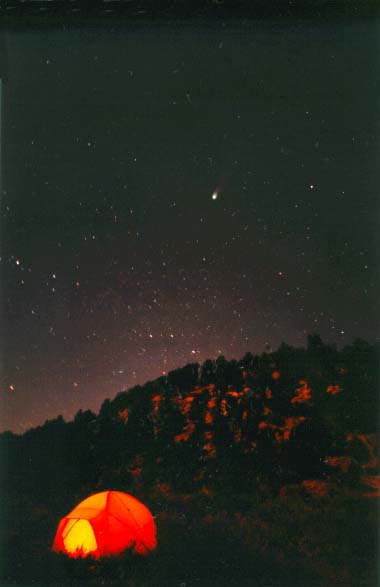

Summary
In this lab you will be introduced to the night sky via the planetarium. You will also be required to learn to pay close attention to detail and run a simple experiment, using a plot to help describe what you are seeing. The interpretations of this plot introduce you to the scientific process and some of the skills needed to be a scientist. Concepts such as random sampling, finding trends in graphs and the importance of good observing sites should all be clear at the completion of this exercise.
Background and Theory
Observing the night sky has been an important part of human culture for
thousands of years. In the last several hundred years,
the advent of technologies such as the telescope and the computer revealed
the vastness of the Universe. Although we no longer describe what we see in
the night sky with myths and legends, the modern day astronomer is still
required to pay close attention to detail and find physical interpretations
for all of her observations.
Our eyes react to light in a very interesting way. When a room is bright our
pupils contract, allowing less light into our eyes and when it is dark our
pupils expand to their maximum size. This process is not instantaneous. It
takes a while for our eyes to completely adjust, especially when making the
transition from light to dark. In this lab we will quantify this change
in the planetarium. As time passes, we should be able to observe fainter and fainter stars within a given area of the sky. By counting the number of stars at various
times during the planetarium visit, we will be able to graph this effect and
interpret the results.
Procedure
Print out the worksheet, and go to the planetarium, or outside at night.
- Obtain a small paper tube. When instructed, point the tube at the dome and while holding it steady, quickly count the stars that you see in your tube.
- Write down the time elapsed since you came in the room (in the first case
this is just 0 minutes) and the number of stars you see.
- Randomly select a new spot on the dome for your next observation. This
may not seem "scientifically" correct but your TA should explain to you why we
can select the places we look at random and still have sound results
- Repeat your observation and your data taking every 30 seconds until 5
minutes have elapsed. Record all of your measurements on the data table.
Make a plot and answer the questions on the worksheet.
© 2003 Weber State University
Revised: April 24, 2003

![]()